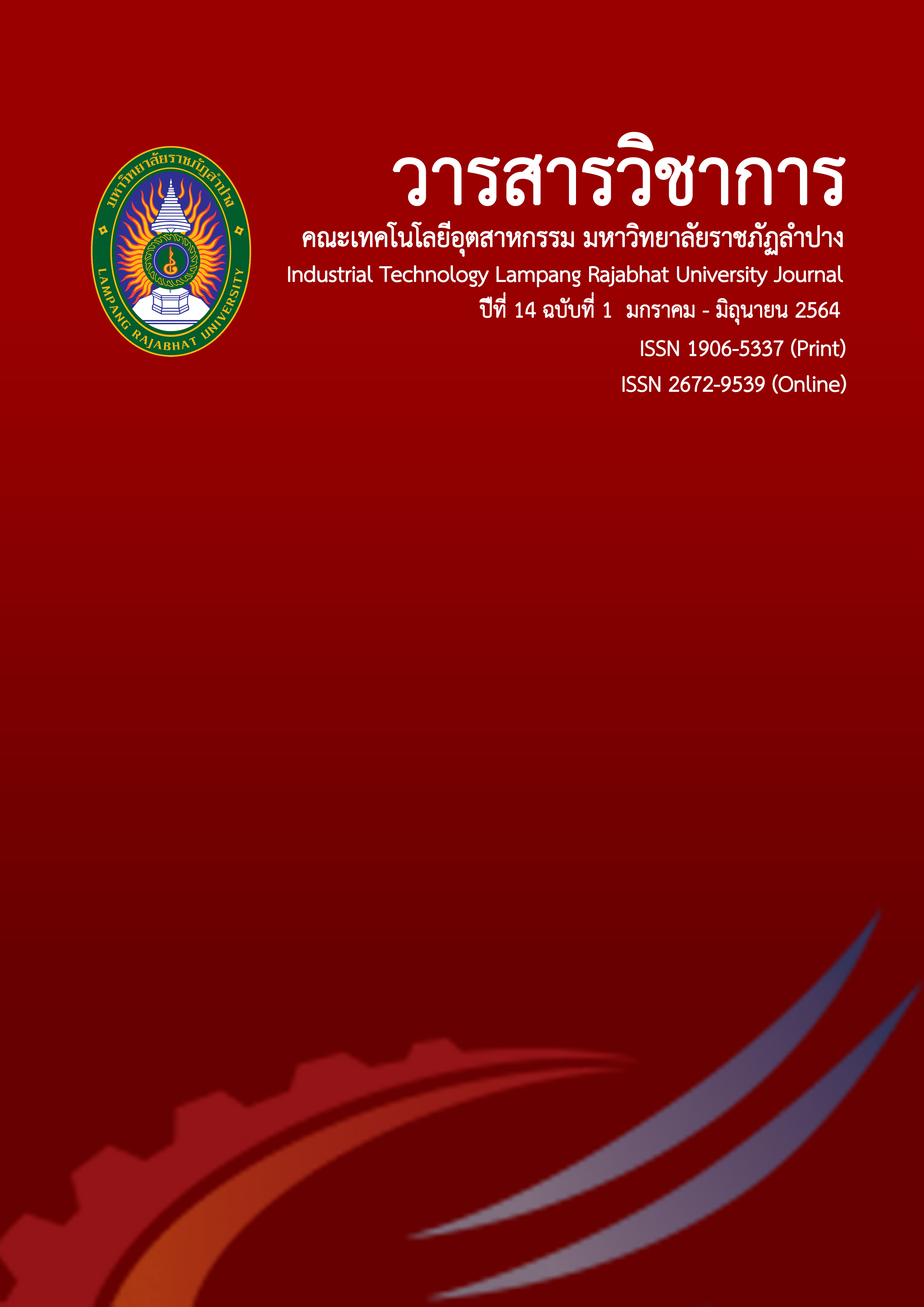Design Guidelines on Promotion of The Public Space Potential in the Old District of Chiangrai City
Keywords:
Design Guidelines, Public Space, Public Furniture, The Old District, ChiangraiAbstract
This research article investigated the potential of public spaces in Chiang Rai old district. Analysis of user behavior and needs led to the determination of design guidelines that sought to promote the potential uses of these public areas. This was a mixed method research collecting both qualitative and quantitative data. The research instruments used were a public space survey form, a behavioral observation form, and a user requirements questionnaire.
The study found that the design guidelines to promote the potential of public areas in Chiang Rai old district could be separated into 4 main aspects: 1) The highest potential public space is a park in Suantung area (the old prison) located in Chiang Rai old district. This is a popular area for organizing annual events, is convenient to travel to, and connects to the economic area. Therefore, the government should encourage a wide range of its uses. 2) The needs of public space users both inside and outside Chiang Rai old district should be investigated. 3) The guidelines for the creative design of public spaces in Chiang Rai old district, comprising public furniture sets and space design should be established. 4) Planning for the potential development of public areas in Chiang Rai old district, such as increasing access to areas, adding service points and considerations of signage and advertising media should be carried out.
References
Chaijan, S. & Laiprakobsup, N. (2016). Public Concepts of Urban Public Space. Built Environment Inquiry – BEI, vol. 15(2), 71-83. (in Thai)
Gehl, J. (1987). Life Between Buildings. Washington: Island Press, ISBN: 978-1597268271.
Kotchasee, K. & Anukulyudhathon, E. (2019). Dimension Application of Public space and Role of Traditional Community in Chiang Mai City. Rajabhat Chiang Mai Research Journal, vol. 20(1), 6-18. (in Thai)
Lisnund, N. (2016). The study of Public Space Potential in the Old District of Nakhon Ratchasima City. Faculty of Industrial Technology. Nakhon Ratchasima Rajabhat University. (in Thai)
Ludmila Kozlova & Valery Kozlov. (2018). Ten quality criteria of the public spaces in a large city. MATEC Web of Conferences, 212(21), 1-7 DOI: 10.1051/matecconf/201821204012
Matthew Carmona. (2019). Principles for public space design, planning to do better. URBAN DESIGN International, 24(1), 47–59.
Namjaidee, N. (2020). Survey and Study of Important Cultural Resources in the District AreaChiang Rai Old Town, Mueang District, Chiang Rai Province. Journal of Social Academic, vol. 13(1), 37-47. (in Thai)
Office of Natural Resources and Environmental Policy and Planning. (2013). The project scope in the old city of Chiang Rai. Bangkok: Ministry of Natural Resources and Environment. (in Thai)
Project for Public Spaces (PPS). 2018. PLACEMAKING. n.p.
Seema Praliya & Pushplata Garg. (2019). Public space quality evaluation: prerequisite for public space management. The Journal of Public Space, 4(1), 93-106.
Tara Smith, Maurice Nelischer & NathanPerkins. (1997). Quality of an urban community: a framework for understanding the relationship between quality and physical form. Landscape and Urban Planning, 39(2), 229-241.
Thailand Creative & Design Center. (2014). Service Design. n.p. (in Thai)
Downloads
Published
Issue
Section
License
Copyright (c) 2021 Industry Technology Lampang Rajabhat University

This work is licensed under a Creative Commons Attribution-NonCommercial-NoDerivatives 4.0 International License.






